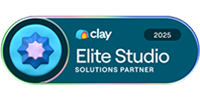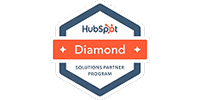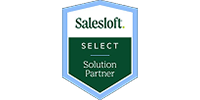Reimagining Territory Planning: How Data, Automation, and Signal Intelligence Are Redefining Sales Efficiency
Most organizations still rely on static, spreadsheet-driven approaches to sales territory planning. These models were designed for a pre-automation era — when data moved slowly, human capacity was fixed, and sales processes were inherently manual.
In 2025, this approach is obsolete. Modern revenue organizations sit on massive volumes of CRM data — much of it outdated, duplicated, or incomplete — and continue to assign territories based on arbitrary firmographic categories and outdated hierarchies. The result: inefficient coverage, wasted rep capacity, and declining conversion rates.
Advances in automation, AI, and orchestration platforms like Clay.com now make it possible to continuously validate, enrich, and reprioritize every account in a CRM — not once a year, but on a cadence that makes sense for the business. This paper outlines why the traditional model fails, what technology now makes possible, and how FullFunnel is pioneering a signal-driven, capacity-based approach to territory management.
1. The Core Problem: Static Territory Planning in a Dynamic Market
1.1. The Reality of CRM Data Decay
The average CRM database decays by 30–35% per year due to job changes, company movement, and restructuring.
- Gartner estimates poor data quality costs organizations an average of $12.9 million annually in wasted resources and lost opportunities.
- Up to 64% of organizations cite data integrity as their top sales challenge.
In other words, the foundation of most sales territory plans — the CRM — is fundamentally unreliable after just a few months.
1.2. Static Lists, Static Thinking
Most companies build “named account lists” once a year based on:
- Firmographics (industry, company size, revenue, location)
- Historical relationships
- Legacy territory boundaries
This method assumes markets are stable and that rep coverage should mirror geography or verticals. But in reality, buyer intent shifts daily, new decision-makers appear weekly, and the competitive landscape evolves continuously.
The outcome: 80% of accounts assigned to reps will never engage or are not in-market for your solution in that planning cycle. This means you're potentially wasting up to 80% of your resources and input costs.
2. The Efficiency Crisis: How This Impacts Organizational Performance
2.1. Wasted Human Capital
Reps spend 30–40% of their time researching and updating account data that could be automated.
Teams over-invest in manual processes — checking LinkedIn, cross-referencing databases, and updating CRM records — instead of selling.
Territory imbalance compounds the problem: some reps are overloaded with low-probability accounts, while others are underutilized.
2.2. Missed Market Timing
Traditional plans cannot react quickly enough to signals of buyer readiness — intent data, hiring trends, product launches, or funding events.
By the time accounts are re-evaluated, the window of opportunity has closed.
2.3. Political, Not Performance-Based Assignments
Legacy territory planning is often shaped by historical deals or internal politics, not by objective data. This leads to misalignment between rep strengths, market opportunity, and coverage density.
3. The Breakthrough: Why This Can Now Be Solved
Until recently, solving this problem at scale was technically infeasible. The process of enriching, scoring, and reassigning thousands of accounts required weeks of data operations and CRM engineering.
Platforms like Clay.com have changed that.
3.1. Clay as an Automation Orchestrator
Clay connects directly to your CRM (Salesforce, HubSpot), data enrichment providers (Clearbit, Apollo, LinkedIn), and even mapping tools like Google Maps. It allows you to:
- Enrich and validate all account and contact data automatically
- Identify job changes, new hires, and title shifts
- Combine first-party data (CRM activity, engagement) with third-party signals (intent, funding, hiring)
- Score every account’s “Sales Readiness” in real-time
- Push prioritized, enriched lists directly back to your CRM
What once took data teams months can now be done every quarter — or even continuously.
3.2. Removing Human Bottlenecks
By operationalizing data validation, enrichment, and prioritization, Clay replaces the manual effort once required for:
- Spreadsheet clean-up
- Manual contact verification
- Ad-hoc account scoring
- Annual territory meetings
Now, a single orchestrated workflow can trigger quarterly, semi-annual, or annual rebalancing across the entire go-to-market organization.
4. The New Model: Dynamic, Signal-Driven Territory Design
FullFunnel’s approach redefines how organizations think about “territory.”
Instead of static, geography-based allocation, we use signal architecture to dynamically prioritize accounts each quarter based on their probability to convert BEFORE they are assigned geographically or based on industry.
Step 1: Data Validation & Enrichment
Quarterly automation checks all CRM records:
- Validates company information
- Enriches missing data (headcount, funding, tech stack)
- Updates contacts with new titles, new hires, and departures
Step 2: Signal-Based Scoring
Each account is scored based on a Sales Readiness Model, incorporating:
- Intent and engagement signals
- Firmographic and technographic fit
- Internal pipeline and deal history
- Hiring velocity and organizational growth
Step 3: Capacity-Based Assignment
Accounts are then distributed based on rep capacity, not static territories.
By modeling the throughput potential of a modern sales rep (augmented by AI and workflow automation), you can:
- Assign more accounts to high-capacity reps
- Ensure balanced opportunity coverage
- Reduce the total number of reps required while improving overall conversion rates
Step 4: Continuous Rebalancing
Each quarter, the system:
- Validates data
- Refreshes readiness scores
- Rebalances accounts dynamically
This ensures that sales coverage always aligns with current market conditions — not last year’s assumptions.
5. The Impact: Fewer Reps, More Process, Better Coverage
Dynamic territory planning enables:
- Up to 7% increase in revenue without additional headcount (Xactly)
- 68% higher win rates through disciplined account prioritization (S2M Group)
- 10x sales capacity per rep when leveraging automation and AI-enhanced workflows (FullFunnel internal modeling)
In short:
Less human capital, more orchestration, higher yield.
6. FullFunnel’s Pilot Framework
For clients in our beta program, the implementation includes:
- Quarterly CRM Data Validation and Enrichment (via Clay and enrichment partners)
- Signal Architecture Implementation (bespoke scoring logic designed for your ICP)
- Capacity-Based Territory Balancing (rep capacity modeling + assignment automation)
- Reporting & Insights Layer (coverage maps, score dashboards, assignment reports)
We’ll measure:
- CRM data integrity improvement
- Territory equity and rep coverage efficiency
- Conversion rate delta pre/post pilot
- Reduction in manual sales ops hours
7. The Future of GTM Efficiency
The next generation of GTM organizations will look less like armies of individual reps managing spreadsheets — and more like data-driven systems of orchestrated workflows, running continuously in the background.
Territory planning will move from being a political exercise to a performance system, dynamically allocating opportunity where it’s most likely to convert.
Clay makes that possible today.
FullFunnel makes it operational.
Ready to move from static maps to signal-driven coverage?
Book a 30-minute consult to see the pilot in action.










